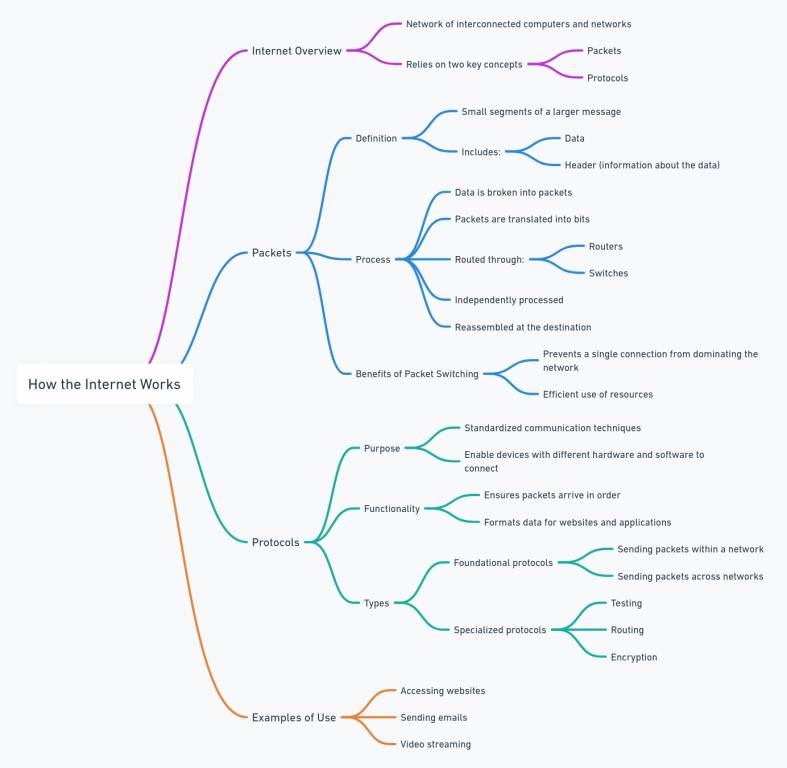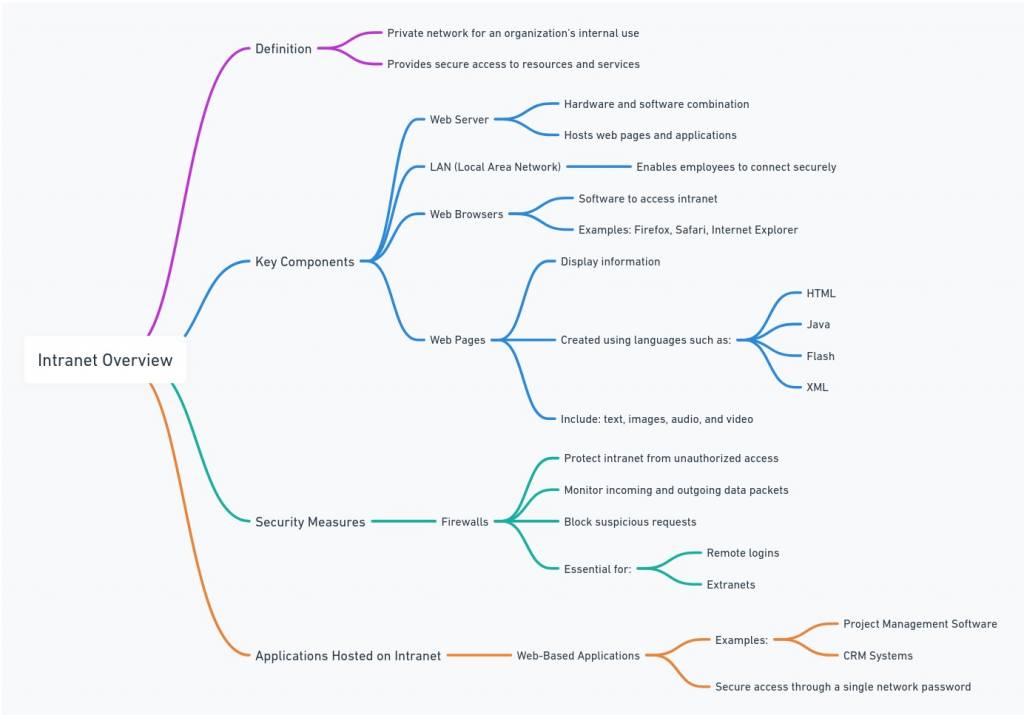What is the Difference Between Internet and Intranet?
Internet and intranet are the two popular terms in the field of computers. But many people get confused about whether these words are related in some way or not. Here, we will explore the similarities and differences between the two.
Best-suited Networking courses for you
Learn Networking with these high-rated online courses
Difference Between Internet and Intranet
Let us explore the differences between internet and intranet:
| Internet | Intranet |
| Internet is a huge network that connects computer networks across the world. It uses the Internet protocol suite (TCP/IP). | An intranet is a network connection similar to the internet but it is limited by the users within an organization. It can include several LANs or leased lines in the wide-area network. |
| The internet enables the exchange of a huge amount of (unlimited) information between the connected users. | It enables the exchange of limited information between limited and authorized people of a particular firm. |
| It provides access to all types of information. | The intranet has all the information, resources, programs, events, and more related to a company. |
| It is a public network. | It is a private network. |
| The internet has multiple users. Anyone can access it. | Intranet has limited users. Only certain people with login credentials are authorized to use Intranet. |
| The Internet consists of several intranets. | It is like a part of the Internet. |
| It is a wide and insecure network. Internet is a global network with low privacy. There is the possibility of leaks of data and information | Intranet is a limited and secure network. It has a pre-installed firewall that protects the privacy of the firm against unauthorized access or hackers. |
What is Internet?
The internet is a wide computer network and other electronic devices. It enables users around the world to access information, communicate with anyone in the world, and do a lot more.
The internet consists of computers, network devices, cables, routers, data centers, satellites, Wi-Fi towers, etc. that allow digital information to travel across the globe. It uses Internet Protocol (IP) address to differentiate between two computers.
Using the internet, we can browse social media apps, send and receive emails, watch our favourite movies, etc. We can do all of this and much more by connecting our computers to the Internet, which is also called going online.
Features of Internet
Let us take a look at some of the features of the Internet:
- The Internet is a global service that is available to everyone.
- Internet service interacts heavily with other forms of media.
- The Internet facilitates communication via text, voice, and video.
- Internet service development and maintenance costs are relatively low.
- The Internet is simple to learn and use as the web browser designed to use the Internet is simple.
The internet is open to all. Thus, there was a need for a network that would work for a specific range, such as within an organization or private community, school, college, etc. To cater to this need, the term intranet was coined.
Benefits of Internet
- Through the internet, you have a continuous supply of information about anything and everything.
- Stay connected with everyone in the world regardless of distance.
- Learn different skills through online certifications and courses.
- Purchase and sell products and services through the Internet.
How Does The Internet Work?
The Internet is a type of network that is created by a large number of computers and computer networks. The working of the Internet is dependent on two main concepts, including packets and protocols.
1. Packet
A packet is a small segment of the larger message that contains both data and information about the data. The information related to the contents of the packet is known as the 'header'. This header goes in the front of the pack so that the receiving machine is aware of what to do with the packet.
When the data is sent over Internet, it gets first broken up into smaller packets that get translated into bits. Packets are routed to their destination through various networking devices, including routers and switches. Whenever the packets arrive at their destination, the receiving device reassembles the packets within orders, and then, it can use or display data.
Packets are sent across the Internet through a technique called 'packet switching'. Routers and switches can process packets independently from each other without accounting for the source or destination. It is designed in a way that no single connection can dominate the network. In case the data was sent between computers simultaneously with no packet switching, a connection between two computers can occupy multiple cables, switches and routers for minutes at a time.
2. Protocols
In the beginning of the internet area, one of the main challenges was to connect two computers, especially when they used different hardware and software. A communication technique is required in this case that can be understood by every connected computer. For this purpose, standardized protocols were introduced.
These protocols are used for sending packets between devices on the same network for sending packets from network to network. This is meant to ensure that the packets successfully arrive in order and to format data for websites and applications. In addition to these foundational protocols, there are other protocols for testing, routing and encryption.
The following image summarizes how internet works:
Organizations leverage the Internet in various ways to enhance their operations and reach:
- Customer Engagement:
- Facilitates direct communication through email
- Enables social media interaction and brand presence
- Provides informative and interactive websites
- Knowledge Acquisition:
- Offers access to extensive online databases
- Enables efficient data gathering through digital surveys
- Utilizes search engines for comprehensive information retrieval
- Digital Marketing:
- Implements targeted advertising campaigns
- Utilizes pay-per-click and display ad strategies
- Conducts email marketing initiatives
- Employee Development:
- Delivers remote learning opportunities through online courses
- Hosts interactive webinars for skill enhancement
- Utilizes eLearning platforms for continuous professional growth
What is Intranet?
An intranet is a private computer network that is only accessible to a specific group of people, such as an organization and its employees. It is a dedicated hub that enables employees to communicate and securely share data. It uses a LAN (local area network) that interconnects the computers of the different members of the intranet.
Benefits of Intranet
Intranet helps organizations to:
- Centralized hub linking all employees, fostering unity and integration.
- Facilitates teamwork with tools like forums and real-time chats.
- Central platform for disseminating key company news and announcements.
- Unified storage for documents, ensuring easy access and version control.
- Streamlines processes, enhancing efficiency and focus.
- Centralization cuts redundant systems, saving operational expenses.
- Secure platform for internal communications, safeguarding sensitive data.
How Does Intranet Work?
- Intranet relies on web servers, web browsers, firewalls, CMS, web-based applications and LAN connections. An intranet requires a web server comprising of both hardware and software. Employees will be required to connect to the organization's LAN for accessing internet. These computers require web browser software such as Firefox, Safari or Internet Explorer.
- Intranet requires web pages to display information. These pages are created using web programming language such as HTML, Java, Flash and XML while incorporating text, images, audio and video.
- It is important to use firewalls to protect intranet from unauthorized access. Firewalls monitor incoming and outgoing data packets while blocking suspicious requests. These are important for intranet security especially when remote logins and extranets are involved.
- Intranet can host web-based applications including project management software, CRM systems and project management software. These can be securely accessed through intranet using a single network password.
Here is a summarized explanation:
Usage of Intranet Within Organization
Intranets serve multiple purposes within organizations, enhancing various aspects of internal operations:
- Team Collaboration Hub:
- Facilitates document sharing
- Enables project updates and announcements
- Supports virtual team meetings
- Internal Communication Platform:
- Disseminates company-wide messages
- Provides forums for employee inquiries and feedback
- Share organizational news and developments
- Learning and Development Center:
- Hosts e-learning modules and online courses
- Offers access to video tutorials
- Provides job-specific resources and guides
- HR Information System:
- Maintains comprehensive employee records
- Tracks leave and attendance
- Manages performance evaluation processes
- Central Document Repository:
- Stores organizational policies and procedures
- Includes important forms and templates
- Ensures easy access to critical company documents
Conclusion
Hope this article has helped you understand the difference between internet and intranet. We have learned that both the internet and intranet serve the same purpose. They work on a similar concept. However, the implementation and use of these two are different. They both have some similarities and dissimilarities. The Internet is an open, global, and public space whereas an intranet is a private space. An intranet may be accessible from the Internet. However, it is protected by a password and accessible only to trusted or authorized users.
FAQs
What is an extranet?
An extranet is a controlled private network or a web portal that is accessible by an organization and its external vendors, partners, customers, or any other users to gain access to restricted information. The host organization manages the site administration. It shares controlled access with internal and external members through user IDs, passwords, and other authentication mechanisms on a login page. Examples of extranet include a vendor portal or a franchise portal.
What are the benefits of extranet?
Some of the advantages of extranet include Smooth information sharing, improved safety of documents, sharing of large volumes of electronic data, and joint company collaboration and training.
Explain the difference between intranet and extranet?
The main difference between intranet and extranet depends on the users who can access them. The intranet can be accessible only to a specific group in an organization. On the other hand, an extranet is accessible to a group of people in an organization as well as external members of an organization such as stakeholders and clients.
Are intranet connections faster than internet connections?
Generally, intranet connections are much faster than internet connections because the electronic signals travel a shorter physical distance. Also, the network hardware on an intranet is controlled entirely by the organization using it, so there is less competition for network resources.
What technologies are common to both the Internet and an Intranet?
Both the Internet and an Intranet use similar technologies, such as web browsers (e.g., Chrome, Firefox), web servers (e.g., Apache, IIS), and TCP/IP protocols for communication.
How do the Internet and Intranet support communication?
The Internet supports global communication through email, social media, and various messaging platforms. An Intranet supports internal communication within an organization through tools like internal messaging, email, and bulletin boards.
Can an organization have both an Internet and an Intranet presence?
Yes, organizations often have both. The Internet presence (e.g., a public website) is used for external communication with customers and stakeholders, while the Intranet is used for internal communication and operations.







